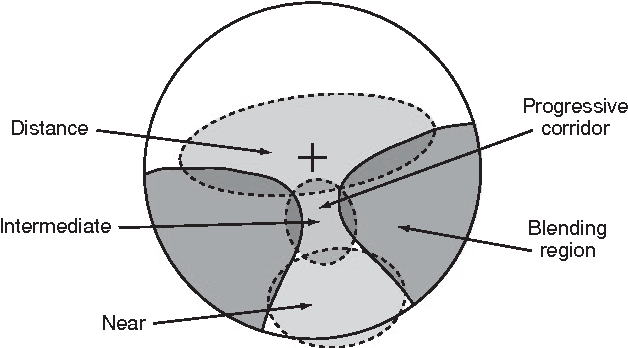Digital Progressives: Fixed Corridor vs Variable Corridor Length

Throughout my day, I am asked many questions here at IcareLabs. The one question that I seem to be getting more often is about fixed corridor progressives and how they compare with variable corridor in digital designs. When is one better than the other and what are the advantages of both?
I hope to answer that for you today.
Let me start by making sure we are all on the same page. We are talking about digital designs here that offer both fixed and variable options. Often, we think of traditional molded progressives when we hear the word "fixed" which gave us two options, regular or short.
Today’s fixed digital designs give us 4 or 5 different corridor lengths to choose from. This allows for a very detailed, customized fitting that just might benefit your patient.
When properly used, a fixed corridor digital progressive is one of the best tools you have in your ECP tool belt. For this tool to be used to its fullest effect there needs to be an understanding of the distinct difference in the 2 designs.
Variable design – Prioritizes the quality of the distance and intermediate area by optimizing the lens based upon the specifications of the Rx, frame measurements, and seg height. Good all-around design, but does not take into consideration all of the patient’s specific needs.
Fixed design – Allows the ECP to put the focus on the reading by controlling the location of the “add” in relationship to the pupil; much like you would with a flattop.
With many of the progressive digital designs we offer, including our Heritage and Legacy house brands along with most Shamir products, you are given the ability to order these in either fixed or variable designs.
With the variable design, all you need to do is give us a seg height, then the corridor length will be set according to this measurement. The corridor length will be longer on higher seg heights and shorter on shorter seg heights, optimizing intermediate width.
Fixed design allows you to set a higher seg height while “fixing” the corridor to a shorter length which will allow your patient to reach the reading area sooner and get deeper into the “segment”. This often allows for a wider field of view while reading and will help ensure they experience 100% of their prescribed add power.
When is this useful?
- When a frame changes from a small B design to a larger frame which results in a change from a short corridor to a regular corridor progressive lens design. This is a common reason for the very few non-adapts we see as your patient has to learn to look deeper into the frame to find the reading sweet spot.
- When a patient goes from distant to near often throughout the day. By setting them in a shorter fixed design you are better able to accommodate their needs.
- When a patient is looking for a wider reading viewing area – By getting them deeper into the add, they will have a wider viewing area.
Decisions like fixing a corridor length can only be made by listening to your patient’s needs. Take a few minutes and find what they like most and least about their current glasses. Find out how they use their glasses and in what environment.
While shortening the corridor could “narrow” the intermediate zone with adds over 2.25, the benefits for the patient whose priority is reading will more than make up for this.


